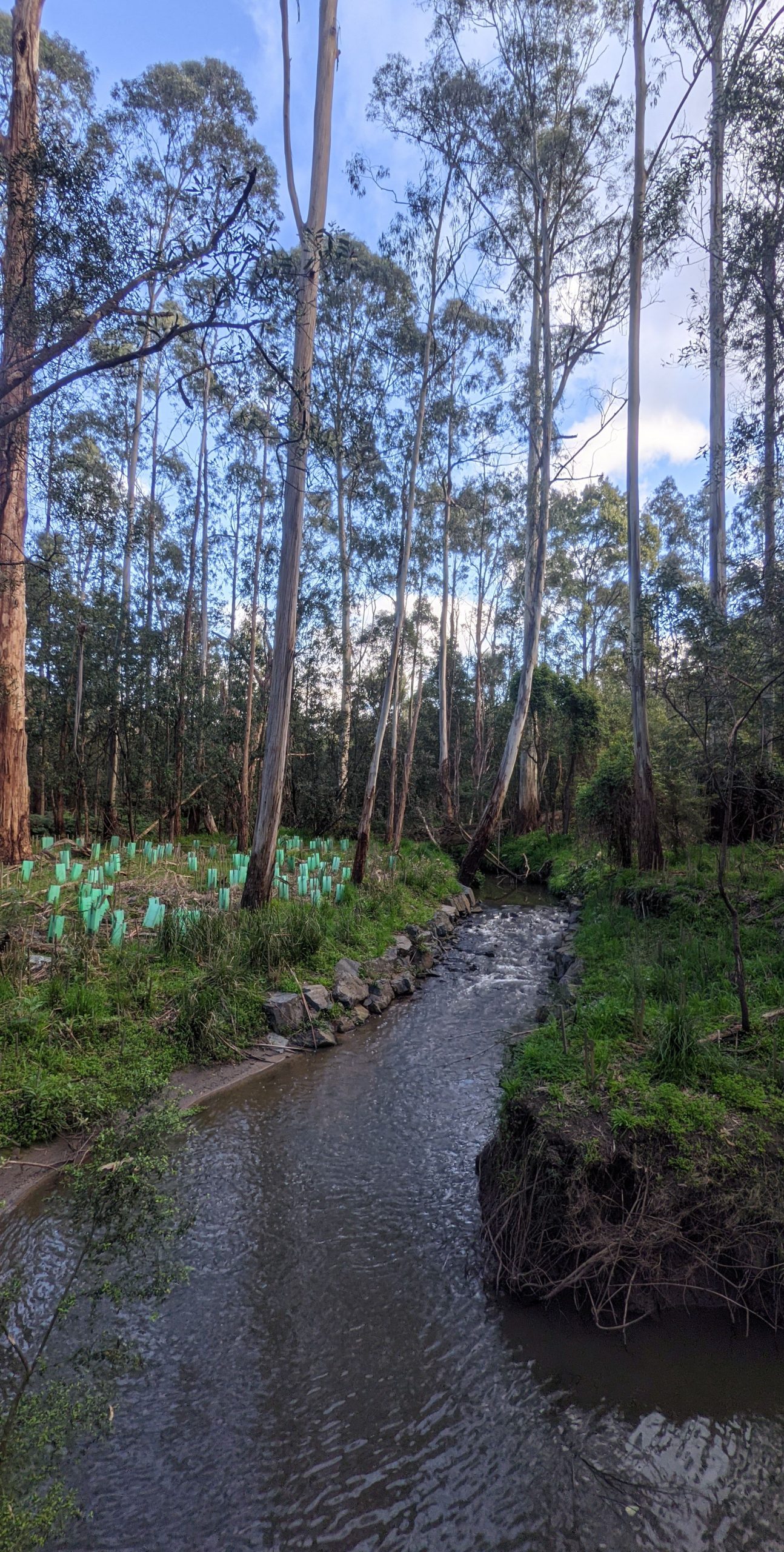Monbulk Creek Smart Water
– why the project is needed
|
In recent years, researchers around the world have demonstrated the importance of returning more natural flow regimes and improving water quality in protecting the biodiversity of urban waterways. Stormwater Control Measures (SCMs) are being installed in many cities to capture runoff, retain excess flows (e.g. stormwater harvesting), and release filtered water to mimic natural flow regimes. Common SCMs include rainwater tanks, bioretention and infiltration systems, and constructed wetlands. Despite the promise of these technological advances, large-scale experiments aiming to improve the health of degraded streams using widespread implementation of SCMs (on public, and increasingly private, land) have so far failed to achieve the desired or hypothesised improvements to streamflow and ecological outcomes. This failure has been attributed to four key factors: 1. challenges in finding adequate space for SCMs on both public and private land; 2. limitations in storage capacity and user demand for stormwater harvesting; 3. the frequent inability of current SCMs, which are passively operated and not coordinated, to deliver the required flow regime; and 4. inadequate maintenance of SCMs, compromising their performance. Realising the potential of SCMs in restoring urban streams requires an approach that addresses these social and technical factors simultaneously. Simply put, there is a need for a new approach, if we are to protect urban waterways from both runoff and drought, projected to become more severe under a changing climate. Such an approach needs to ensure that SCMs are technically capable of delivering ecologically suitable flow regimes in a range of climatic conditions and urban settings, as well as being socially realistic. Given space constraints in the urban landscape and the need to maximise the collective impact of these small-scale technologies, the integration and coordination of SCMs across private and public land is vital. Reconfiguring such highly distributed arrays of SCMs as a hybrid centralised-decentralised system requires both technical innovation and social transformation. It represents a shift away from conventional sociotechnical systems of urban water management, in which centralised corporate or public entities alone manage water infrastructure. Real-Time Control (RTC) technology—until now mainly applied only to large-scale critical infrastructure — offers the potential to revolutionise the way small-scale, highly distributed SCMs operate. Firstly, networking SCMs across a catchment enables their collective coordination as a virtual reservoir that can be actively managed to achieve specific flow and water quality conditions in urban streams, informed by an array of climate and streamflow sensors. Secondly, RTC technology can optimise the use of the storage capacity of individual SCMs, potentially reducing storage volumes and space requirements. RTC technology can inform household decisions in managing rainwater tanks simultaneously for private benefit (non-potable water supply for households) and public good [flood mitigation during storms, release of environmental flows]. Controlled releases can make storage capacity available in a rainwater tank in anticipation of storm events, rather than relying on household demand for non-potable water alone. Thirdly, the sophisticated sensor and control system can identify malfunctions, overcoming uncertainty around maintenance of SCMs. Together, these new capacities of RTC can optimise long-term SCM performance. Right: Monbulk Creek at Birdsland Reserve |
 |
